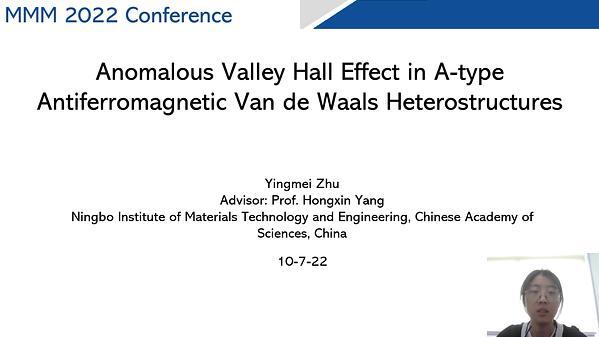Would you like to see your presentation here, made available to a global audience of researchers?
Add your own presentation or have us affordably record your next conference.
Nanocomposites (NCs) are multicomponent materials in which a nanoscale reinforcement is added to a host matrix to combine their different properties. In this work, we
investigate the magneto-optical (MO) properties of an NC made of Soda Lime Glass (SLG), which is a transparent, nonmagnetic, and cheap matrix doped by nanostructures of Cobalt (Co),
a magnetic material. Among various MO effects, the Faraday Effect (FE) describes the polarization modifications of a linearly polarized light when it travels through a magnetized
material. This effect manifests itself as two angles (θ, ε) depicting the polarization rotation and the ellipticity of the emerging light. The Co-SLG NC was formed in two successive steps: a
Co layer was deposited on the glass surface, then diffused into the glass using the thermal poling technique 1. The FE effect was measured at different wavelengths (λ), while the applied
magnetic field (H) varied between -800 and +800 mT. Such FE-H curves describe the magnetic properties of the material under consideration. “Fig. 1-2” shows the θ-H curves measured at
λ=700 nm, for the Co layer “Fig. 1”, as well as for Co-SLG NC “Fig. 2”. The Co layer exhibits a hysteresis loop, which is characteristic of ferromagnetic materials (FM). After thermal
poling, the curve is linear, which indicates that the diffusion of the Co layer within the glass matrix changes drastically its magnetic behavior, most likely due to the oxidation of the Co ions
since the SLG matrix is oxygen-rich. “Fig. 3” presents the spectral behavior of this FE effect for the cobalt layer (saturation value of θ as a function of λ) and the NC (slope of θ-H curve as
a function of λ). Two main bands are observed in the case of the NC, centered at around 700 nm and 1400 nm, whereas no bands are observed for the Co layer. These two bands are
assigned to MO dipolar transitions of Co2+ ions in the tetrahedral sites of the Co3O4 structure 2. If this NC is irradiated with a continuous wave laser, Co3O4 can be transformed
reversibly to CoO 1. Since Co3O4 and CoO have different magnetic and MO behaviors, such NCs may lead to a promising photomagnetic feature that can be used in data storage
applications or optical MO switching.
References:
1 R. Faraj, F. Goutaland, N. Ollier, Physica Status Solidi B., Vol. 257, p.2000155 (2020)
2 W. F. J. Fontijn, P. J. van der Zaag, L. F. Feiner, R. Metselaar, M. A. C. Devillers, Journal of Applied Physics, Vol. 85, p.5100-5105 (1999)

